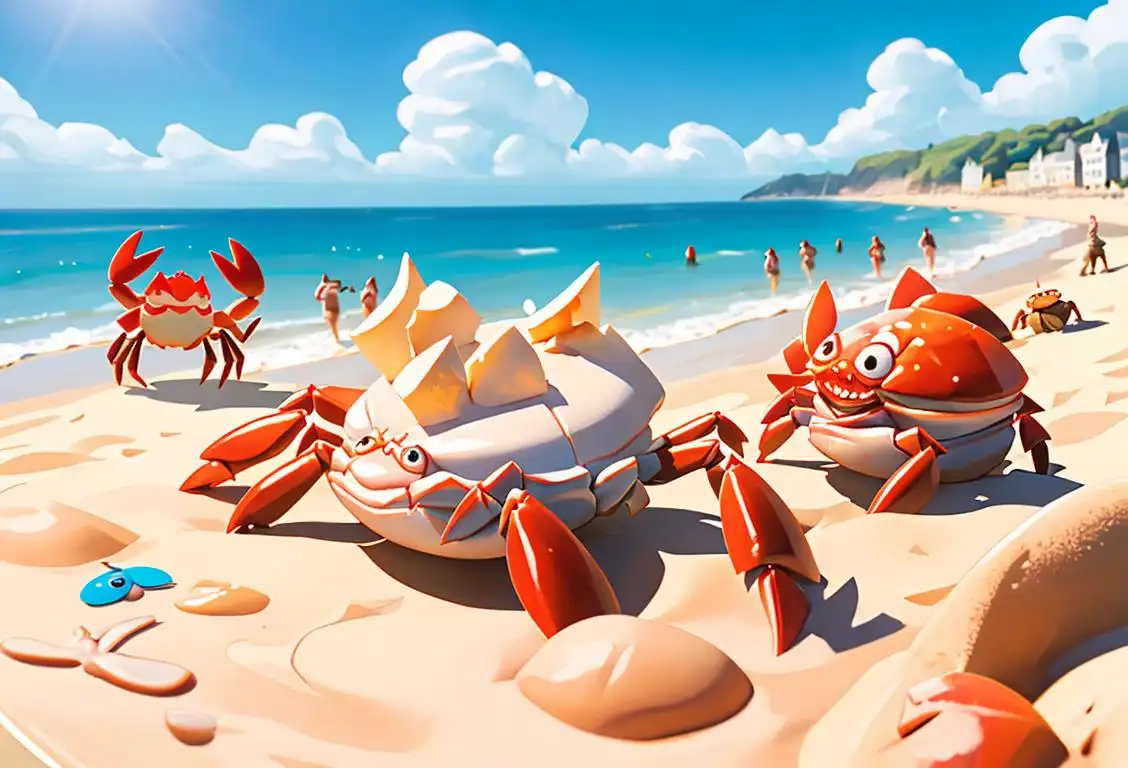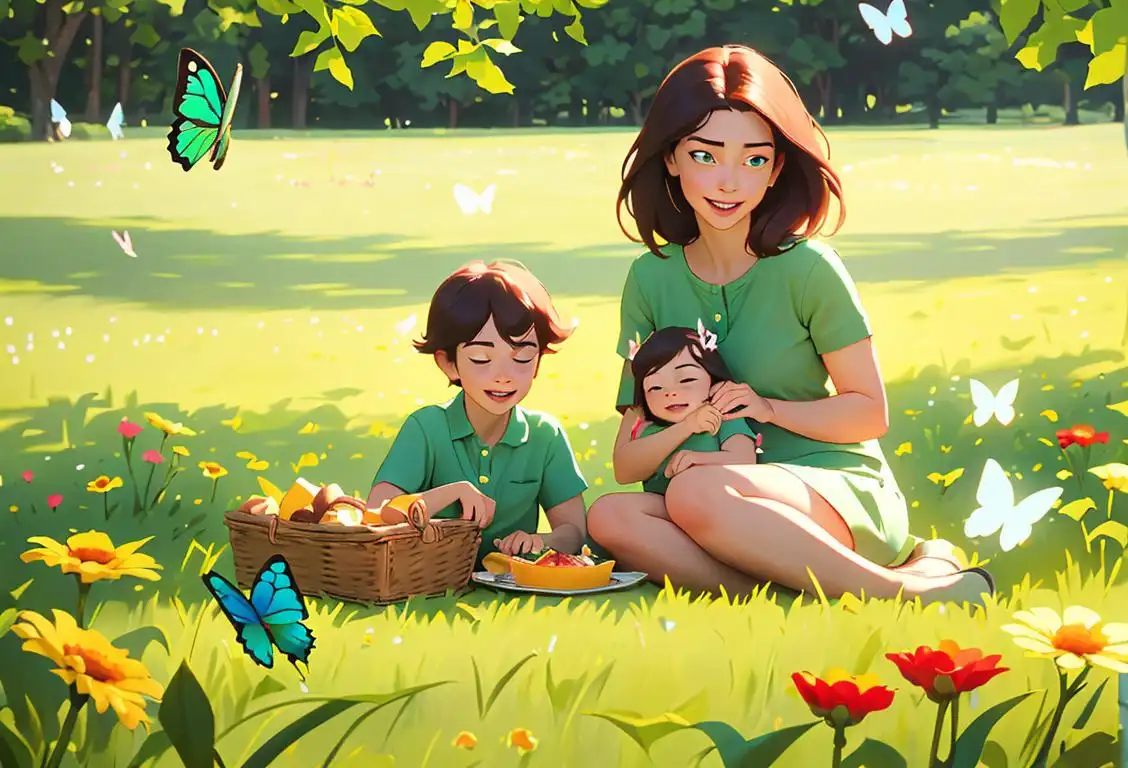National Crab Day

Ahoy mateys! Get ready to embrace your inner crustacean because it's National Crab Day! This is the one day of the year where we can all channel our inner Sebastian and celebrate these marvelous marine creatures. So, grab your crab crackin' tools and let's dive into the deep sea of crab-tastic fun!
When is Crab Day?
It's national crab day on the 9th March.
The Fascinating History of National Crab Day
National Crab Day originated in the depths of the internet under the starry sky. It was a fateful day when a group of seafood enthusiasts gathered to share their love for these underwater marvels. With their claws raised high, they declared March 9th to be a day of crab appreciation and celebration. Since then, folks from coastal towns to landlocked cities have been cracking, dipping, and devouring these delectable crustaceans with gusto.
Crabs have been around for millions of years, gracing both the sea and our dinner plates. They come in various shapes, sizes, and colors, from the mighty king crab to the delicate blue crab. These creatures have captivated both marine biologists and seafood aficionados alike.
On National Crab Day, people gather for crab feasts, host crab races, and participate in all sorts of crab-themed activities. It's a day to indulge in succulent crab cakes, savory crab bisques, and buttery crab legs. Whether you're a fan of Maryland-style crab boils or Asian-inspired crab stir-fries, there's a crab dish out there to satisfy every taste bud.
Fun Facts About Crabs
Did you know that crabs have their very own underwater neighborhoods? These bustling communities are called crab burrows, and they often consist of interconnected underground tunnels. Talk about having your own secret hideout!
History behind the term 'Crab'
1300
Ancient Origins
The term 'crab' traces its origins back to around 1300, derived from the Old English word 'crabba.' This term described a type of crustacean that lives in the sea and has a broad, flat body protected by a hard shell, along with a pair of pincers and eight legs. Crabs were already highly regarded as a source of food and were commonly found in coastal regions around the world.
14th century
The Discovery
The term 'crab' first appeared in the English language in the 14th century. It is believed to have been derived from the Old English word 'crabba', which referred to the crustacean. The word may have come from the Proto-Germanic word 'krab-/'krabb-' which means 'to scratch' or 'to claw'. Crabs have been known to use their claws to defend themselves and catch prey, making the word 'crab' an apt description for these creatures.
15th century
Symbolism in Art
During the 15th century, crabs started to appear as symbolic motifs in art. They were often depicted in medieval and Renaissance paintings as representations of various qualities such as cunning, tenacity, and balance. The use of crabs in art symbolized the duality of their nature - their ability to move both forwards and sideways. This symbolic use of crabs in art helped solidify and popularize the term 'crab' in the cultural lexicon.
16th Century
Symbolic Meaning
During the 16th century, the term 'crab' started to take on symbolic meanings as well. It became associated with notions of fear and unpredictability due to the sideways movement of crabs. Their unique sideways gait was seen as unnatural and linked to being deceitful or crabwise. Consequently, 'crab' began to be used metaphorically to describe people who were of an irritable or ill-tempered nature.
17th century
Crab in Culinary Delights
In the 17th century, crabs gained popularity as a culinary delicacy. The term 'crab' became associated not only with the live creature, but also with the delicious meat it provided. Crabs started to be featured in various cuisines around the world, including dishes like crab cakes, crab bisque, and Singaporean chili crab. The culinary appeal of crabs helped strengthen its cultural significance and solidify its place in the gastronomic world.
18th Century
Crabtree Legend
In the 18th century, the term 'crab' gained further recognition through the popular folklore story of 'Crabtree.' This tale originated in England and told the story of a mischievous and ill-mannered character named Crabtree, who delighted in causing trouble for others. The legend of Crabtree contributed to the negative connotations associated with the term 'crab,' reinforcing the perception of someone with a crab-like disposition as being disagreeable and uncooperative.
19th Century
Crab Mentality
In the 19th century, the concept of 'crab mentality' emerged. Derived from the behavior of crabs, this phrase described a phenomenon where individuals within a group would try to undermine or hinder the progress of others who were achieving success. This behavior was likened to crabs in a bucket, where any crab attempting to escape would be pulled down by the others. The term 'crab mentality' became a metaphor for people who sabotage the success of others due to their own envy or resentment.
19th century
The Crab Nebula
In the 19th century, astronomers discovered a celestial object known as the Crab Nebula. Located in the constellation Taurus, the Crab Nebula is the remnant of a supernova explosion that was observed in 1054 AD. The nebula's filaments resemble the legs of a crab, hence the name. The association of the term 'crab' with this cosmic phenomenon further expanded the cultural impact of the term, extending it beyond the earthly realm.
21st century
Crab Mentality
In the 21st century, the term 'crab' gained a new connotation through the popular phrase 'crab mentality'. The concept reflects social behavior where individuals discourage the success and progress of others, symbolizing the behavior of crabs in a bucket. When crabs are placed in a bucket, if one tries to escape, the others will pull it back down rather than allowing it to succeed. This metaphorical usage of 'crab' in the concept of crab mentality highlights its cultural impact on understanding human behavior.
21st Century
Cultural Shift
In recent years, the cultural significance of the term 'crab' has evolved. While the negative connotations still exist, there has been an emergence of positive associations as well. Crabs are now often admired for their resilience, adaptability, and ability to navigate changing tides. Additionally, the culinary appreciation for crab dishes has grown, showcasing the delectable flavors and versatility of this seafood delicacy. Today, the term 'crab' encompasses a range of meanings, from the negative portrayal of ill-tempered individuals to the celebratory symbol of resilience and delicious cuisine.
Did you know?
Did you know that some crabs communicate by stridulating, which means they produce sounds by rubbing parts of their bodies together? It's like they have their own crab language! Maybe they're trying to invite us all to their next underwater dance party.Tagged
romance food funFirst identified
9th March 2015Most mentioned on
9th March 2016Total mentions
649Other days
One Day
Family Day
Action Day
Kissing Fried Chicken Day
Vodka Boyfriend Day
Awareness Day
Opposite Day
Suicide Prevention Month Day
Happiness Day
Nutty Fudge Day









